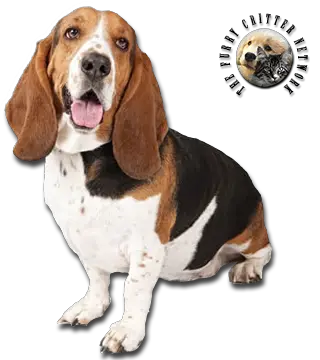Breed Standard
Head: Bony appearance. Domed skull with pronounced occipital peak. Pronounced stop. Slightly curved nosebridge. Cheeks with one or two folds. Upper lip almost completely covering lower lip.
Ears: Set on as low as possible, narrow at the base, well-twisted, very long, supple, thin, and ending in a point.
Eyes: Large, oval, dark. Conjunctiva of lower eyelid sometimes showing. Calm, gentle expression.
Body: Long for its height. Neck fairly long with slight dewlap. Long chest, oval in cross-section. Loin slightly clean-flanked. Full loin. Broad, level back. Rounded croup.
Tail: Fairly long, thick at the base and tapering toward the tip. Carried in saber fashion, never falling onto the back.
Hair: Close-lying, short, and dense but not too fine.
Coat: Tricolor: fawn with white and black mantle. Head mostly covered with reddish-fawn.
Size: 30 o 36 cm (11.8-14.2 in).
Weight: 15 20 kg. (33-44 lb).
History
The Artesian Norman Basset was produced in the nineteenth century by two famous breeders, Louis Lane and Count Le Coulteux de Canteleu, from the Norman Basset (or Lane Basset). The Norman Basset had bandy forelegs and was heavier, slower, and less active than the Artois Basset, a descendent of the old Great Artois Hound. The Artesian Norman Basset was introduced successfully to Great Britain and the United States as the breed was becoming popular in France. The first standard was written in 1898 and modified in 1910 and 1924. A Norman Basset Hound club was created in 1927. For a long time, the breed was the most popular of the bassets, but today it seems less popular as a hunting dog than as a companion dog.
Behavior
This hardy, courageous dog with a great deal of endurance is active and resourceful. He can penetrate the densest vegetation, but terrain that is too rugged should be avoided because of his short legs. With his very keen nose and magnificent voice, he tracks and launches the hunt very confidently, without hurrying. He hunts small game alone or in packs. He excels on rabbit and hare, and can also work on fox and wild boar. Calm, merry, gentle, and affectionate, he is a pleasant companion. He needs firm training because he is tenacious and obstinate.
The Artesian Norman Basset is one of the rare scenthounds who can live in an apartment, but he still needs space and exercise. He also requires regular brushing and attention to the ears.
Function
Hunting Dog, Companion Dog.
Health
The long back of the Basset Artesian Normand is prone to disk disease.






